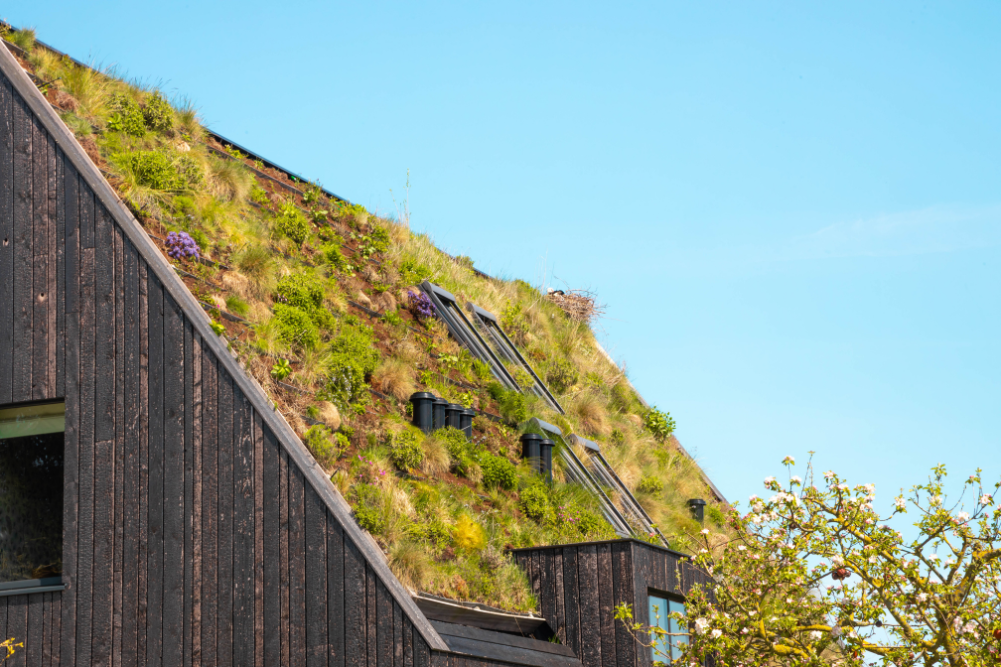Sustainable forestry: The future of forests
Intact tropical forests are wonderful carbon sinks. However, if our forests continued to be destroyed or illegally logged, they could become net carbon sources and pose an additional threat to a stable climate.
Australia’s native forests have long been a stage for adversarial confrontations between loggers and protesters who engage in blockades and who are willing to lock on to equipment in order to immobilise it. They represent two divergent polarised viewpoints: one reductionist outlook that sees trees as a resource to be harvested, and another holistic perspective that views them as part of an ecological whole and a home to biodiversity.
Recently scientists and some of the media have been emphasising the role of the world’s forests in connection with climate change. Intact tropical forests are carbon sinks, although if they degrade they can become net carbon sources and pose an additional threat to a stable climate. The logging of forests contributes to climate change due to the release of the carbon they are storing, the loss of their carbon sink, and carbon generated from disturbed forest soils. Logging in peat-rich areas, often tropical, further multiplies climate impacts. This usually involves draining carbon-rich peat, and releases methane, a greenhouse gas 25 times more powerful than CO2. In jurisdictions with a carbon price, there is also an economic value in leaving forests standing.
Deforestation and the illegal logging problem
Due to their high biodiversity, tropical forests generally have a greater ecological value than those in other parts of the world, but they are tragically being lost. Some of this is linked to timber harvesting for timber or paper, although much is tied to other commodities such as beef, soya, rubber, leather, palm oil, chocolate and coffee.
While deforestation in tropical rainforests remains a target of activists, more scrutiny is now being applied towards northerly temperate regions, including Russia and Canada. At stake are swathes of boreal forest, also known as taiga, that are characterised by pines, spruces and larches.
The logging of forests contributes to climate change due to the release of the carbon they are storing, the loss of their carbon sink and carbon generated from disturbed forest soils.
Illegal logging is estimated to represent 15–30 per cent of the global forestry sector. Fortunately, the trade in illegal timber has been curbed somewhat, with laws prohibiting its import into the USA, the EU, and Australia, where illegal timber was banned in 2012 under the Illegal Logging Prohibition Regulation. New Zealand has a voluntary system, but only imports a small amount of timber.
China is the world’s number-one timber importer, and much of this is for manufacturing products for export. Unlike some other parts of the world, it has weak and inadequate measures for stopping incoming illegal timber. This includes logs entering the country across its border with Myanmar.
Particularly bad in tropical countries, hotspots for illegal logging include the Brazilian Amazon, Indonesia, Papua New Guinea, Cambodia and Ghana. Common factors tend to be corruption, and violence against activists, indigenous people and regulatory officials.
Australian forestry
In Australia, the industry is a mixture of native forest and plantation operations, each oriented towards a different market. While most plantation trees are used for sawn timber, a substantial majority of native forest is woodchipped and exported to countries such as Japan, China and Indonesia to be pulped and converted into disposable paper products, rayon and cardboard.
While the plantation sector is expanding, native forest logging is, like coal, showing signs of being a sunset industry. A national survey carried out internally in 2016 for Forest and Wood Products Australia was later leaked to the media. It found broad opposition to native forest logging that applied to people surveyed in rural areas (65 per cent) and well as metropolitan centres (70 per cent.) Mainstream media coverage of native forest logging is increasingly critical.
Native forests being logged include some higher conservation value areas whose possible protection is often an ongoing topic of contention. Older hollow-bearing trees provide homes to species such as gliders and possums, and the loss of these erodes biodiversity. The states have largely dropped the ball on environmental compliance, with forestry bodies often ignoring their own rules. Clear-felling practices are still used, although they represent a minority of native forest production. In addition to public forests, logging on private land has aroused concern too.
Despite being a small sector in terms of turnover and the number of jobs, native forestry is a key target for government financial support. This protects rural logging towns from being economically decimated and may also be because both major parties need to be seen in the community as pro-business and pro-primary-industries.
As a whole, native forestry is a loss-making exercise reliant on government subsidies. In New South Wales, for example, these totalled $79 million between 2009–10 and 2014–15. A recent PricewaterhouseCoopers report found that in Victoria’s native forestry sector about $5 million per logging job is spent on roads, machinery and equipment.
Among native forest-related developments in Australian states:
- Victoria plans to discontinue native logging in 2030, with supply to be ramped down from 2024.
- Victorian old-growth logging will end immediately, and determining which these areas are will be worked out by computer modelling.
- The ABC uncovered a pattern of unlawful logging in Victoria’s mountain ash forests outside of the permitted area. In 2018, this amounted to 5 per cent of the logging harvest, and in 2019 plans were released to continue this activity.
- Tasmania is ending a logging moratorium in April 2020, and about 400,000 hectares have been reclassified from future protection into future production, although there are no immediate harvesting plans.
The effects of the Australian fires
Over the last few months, Australia’s tragic bushfires burned through about ten million hectares, mostly in New South Wales, with the second most affected state being Victoria. A lot of this is state forest, and there are some far-reaching effects on the timber sector, forest health and biodiversity. These include:
- A loss of timber resources.
- Timber being sourced from unburnt zones, which could add to already huge biodiversity losses if native wildlife has migrated to these areas. The NSW Nature Conservation Council is calling for a native forest logging moratorium across the state. In early 2020, the citizen science group Wildlife of the Central Highlands was granted injunctions in the Victorian Supreme Court to stop the logging of unburned areas, in six coupes.
- Throwing into doubt a privatisation push to sell off NSW plantation forests for $1 billion.
- Controversy over post-bushfire salvage logging of fallen logs, which is being advocated by the industry. According to ecologists quoting scientific studies, post-fire logging severely impacts regeneration, and worsens future fire risk for about 40 years. The burnt logs would be used for loss-making woodchipping.
In New Zealand
Globally speaking, New Zealand is a small forest player and represents about 1.3 per cent of the world trade in forest products. However, wood products are the country’s third largest export. Forests and plantations cover nearly 30 per cent of the land area, compared to around 17 per cent for Australia.
The industry is strongly plantation-focused, with softwood Pinus radiata pine plantations covering areas of the country. This species originated in California and started to be grown in New Zealand as early as the 1850s. New Zealand has the second-largest plantation forest in the southern hemisphere, at Kaingaroa in the central North Island. Only a small fraction of domestically used timber is imported.
New Zealand is in the fortunate position of being one of the few countries in the world whose forest exports are not controversial.
Logging in public forests ended in 2002 following protests, including a petition signed by more than 340,000 people. Now all native forest logging is on private land, and needs to meet sustainability criteria in order to be granted a permit.
As a consequence, New Zealand is in the fortunate position of being one of the few countries in the world whose forest exports are not controversial.
Certifications
While there are more than 50 forest certification programs, two large sustainability certifications stand out in the marketplace.
The Forest Stewardship Council (FSC) is a multi-stakeholder organisation that includes environmental NGOs and is active in Australia and New Zealand. Despite having the strongest third-party standards, the FSC is imperfect, and has been criticised by the website FSC-Watch. It doesn’t exclude logging of old-growth forests, and sometimes allows clearcutting. Since the 2000s, several environmental NGOs have withdrawn their support, and some others have made criticisms, including Greenpeace International. The dilemma here is that boycotting items with the FSC logo is likely to result in worse environmental outcomes than if they are purchased.
Officeworks and Bunnings have announced plans to only sell FSC-certified timber and paper by later in 2020. The native forestry state bodies in Tasmania and Victoria have both applied for FSC certification multiple times, without success, as a result of environmental shortcomings. Australian states have largely dropped the ball on monitoring environmental compliance, with forestry bodies often breaking their own rules. For them to lose access to Bunnings as a marketplace would be a hard blow.
The Program for the Endorsement of Forest Certification (PEFC) is a less stringent standard that has been criticised by environment groups, accused of failing to achieve environmentally responsible forest management. Critics have also raised a lack of input from environmental NGOs and local people, a lack of transparency and non-objective requirements. The PEFC lacks much of the FSC’s multi-stakeholder emphasis.
In Australia, PEFC standards are administered by the Responsible Wood organisation, which has its own certification scheme. The Australian Forestry Standard, which governs about 90 per cent of the national forest production area, is also aligned with the PEFC. In New Zealand, FSC is the top plantation certification.
Consumer leverage
Individual consumers can make a difference by choosing the most sustainable options. When investigating a possible purchase, it’s important not to be misled by greenwash, which can be a pitfall in the timber and paper sectors.
When buying copier paper, look for 100 per cent post-consumer recycled products, many of which are also FSC-certified. A useful resource in Australia is the Ethical Paper website at ethicalpaper.com.au, and several options exist in New Zealand. Buying FSC-certified virgin paper lacks many of the environmental advantages of recycled but is a step up from uncertified. For disposable paper products such as towels, tissues and serviettes, find a non-disposable alternative, buy recycled, or choose FSC.
For timber, the most environmental avenue is to go for recycled by buying reclaimed timber from a second-hand timber yard. FSC-certified timber is increasingly available in the marketplace, and for Australia and New Zealand the countries’ respective FSC websites provide lists of certified timbers. If a certified supply is unavailable, for Australian consumers plantation origin is better than native forest, despite having some shortcomings. It is recommended to avoid all imported tropical rainforest timber.
Much of the timber being imported by China is unsustainable, and there is a lower concern about the environmental impacts of forestry than in the West. If considering the purchase of a large item such as a piece of furniture from China or elsewhere, go detective. Look for FSC certification, find out which timber species is involved, and the country it originated from. Two important considerations are quality and durability, because a product likely to fall apart prematurely will multiply timber consumption.
At a more activist level, lobby for decision-makers not to use unsustainable timber. One example involves the Japan 2020 Olympic stadium that has been targeted by activists for making use of likely-unsustainable plywood derived from Indonesian rainforests. Another avenue is to move your superannuation to a super fund with good forest-related ethical screening. Some funds exclude logging of old-growth native forests, while others go further and tackle all native forest activities.
Logging and some alternatives
Under ideal circumstances, timber can be an environmentally sound construction material, especially when compared alongside embodied energy carbon guzzlers such as steel and aluminium.
However, there are alternatives to logging. Native forest can be left standing and serve as a source of economic benefits from tourism. Trees can be grown to produce a range of yields, including nuts, fruit and honey. For construction, potentially carbon-negative tree-free eco options are hemp, bamboo and straw.
Realistically, third-party certification is no panacea. The world is consuming more timber than it needs and is wasting too much. Curbing this waste is achievable via efficiency gains, better recycling and new innovative uses such as remanufacturing timber waste into new products like pallets. In the meantime, there is value in using consumer choices to help steer demand in an environmentally sound direction.
Resources
Forest Stewardship Council (Australia)
Forest Stewardship Council (New Zealand)








